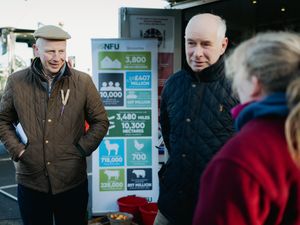Swings in market prices affecting budgets
How should farmers plan their compound feeds strategy in the light of market movements?
When it comes to compound feeds – blends or straights – this is one of the key questions posed by the farming community, along with how far forward we should cover.
There is never an easy answer to this question. But with margins being squeezed due to recent declines in farm gate prices across all sectors it is impossible to ignore the importance of this forecasting.
It would certainly appear to be a buyer's market at present with prices on both proteins and cereals at their lowest levels for many years. If you look at soya, which accounts for a third of the UK's protein market, prices are currently trading at a range of £40 to £60pmt below last year's prices, and £50 to £100pmt lower than the same period for 2012.
Soya is the benchmark for the protein market and tends to greatly influence the other protein materials such as rapemeal and distiller grains, hence both these products have followed a similar trend over the past two years.
Presently the North American soya harvest is well under way and the region is experiencing favourable weather conditions. The crop is expected to be the second largest on record with a yield of 47.1 bushels per acre compared with 44 bushels per acre for the 2013/14 season. Add to the mix an expected record South American planting acreage and it has all the makings of a bearish market. But approximately 50 per cent of this drop has been due to favourable movements in foreign exchange which is unlikely to happen going forwards.
Not to be outdone the cereal market will also boast some big numbers this year, with world wheat stocks estimated to increase by 10 million tonne over the previous year and global corn stocks estimated to increase by 16 million tonnes.
Closer to home the UK wheat market looks set to pass 16.5 million tonnes, making the UK a potential exporter of around three million tonnes of surplus wheat. With all these global increases in tonnages, ex-farm prices for the arable farmer have certainly taken a knock. As little as 18 months ago ex-farm wheat was trading at over £200pmt, as of the beginning of October this year that price had fallen by 50 per cent. These huge swings in market prices in such short spaces of time only serve to highlight the various difficulties the farming industry faces when it comes to budgeting for six or 12 months ahead.
With worldwide record crops, and plantings due over the next six months, it would seem likely the farmer could expect further drops in compound feed prices. But it is worth considering that all news in the market is currently bearish and as we have seen in the past this can all too quickly change through uncontrollable global influences. The weather, regional conflicts, fuel prices and the money markets all have an impact.
So, should farmers be looking to contract their compound feed?
Our view would be that if contracted compound feed is cost effective within your budget for six, or possibly 12 months, then the stability this could offer should be given careful consideration.
By Carwyn Worthington, trading manager (Straights), Wynnstay Group PLC





